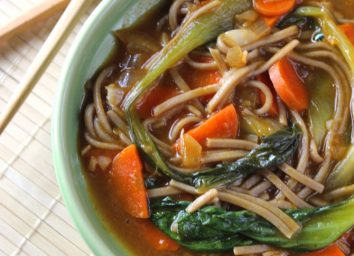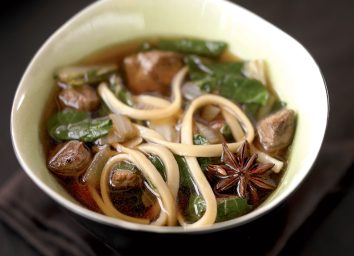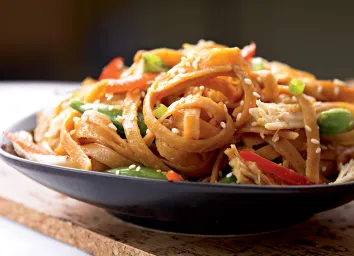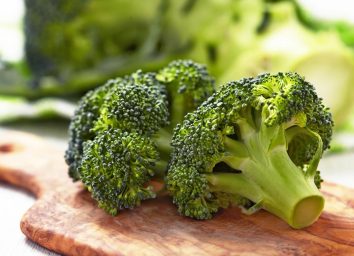What Are Shirataki Noodles? Meet the Low-Calorie Pasta Your Diet Needs
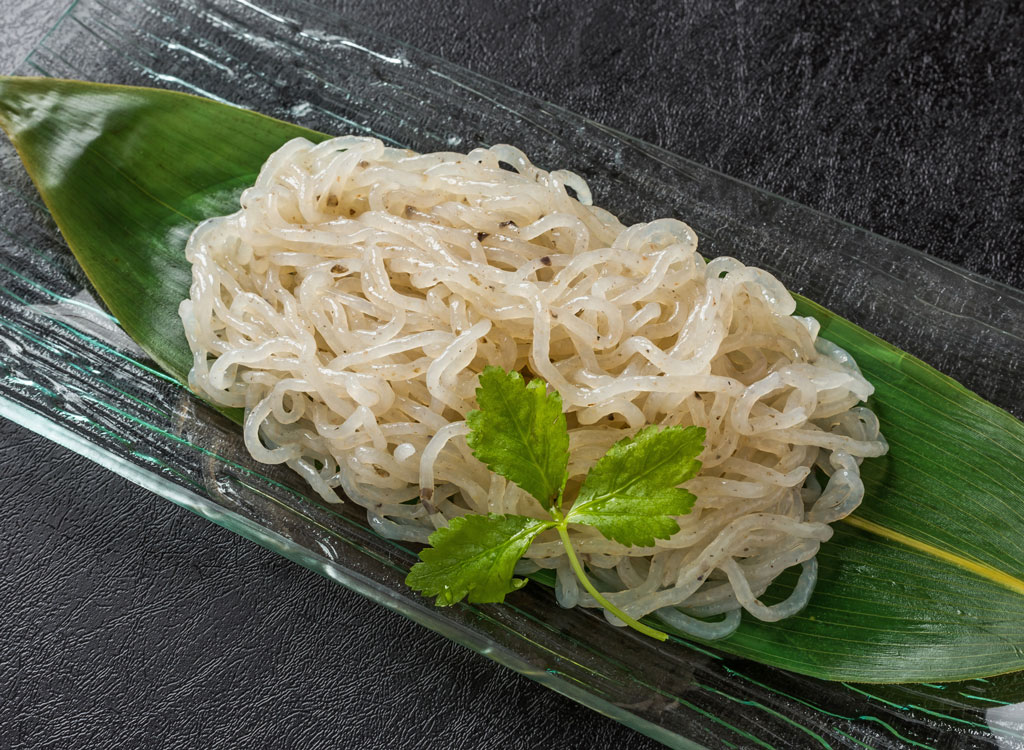
If you've ever done a round of Whole30 or attempted to eat paleo or keto, you probably know all about compliant noodles. There are some you can make at home with a spiralizer such as zucchini noodles (or zoodles, if you're fancy), as well as noodles made from carrots, sweet potatoes, and beets. Or you can purchase black bean spaghetti or chickpea rotini at the store. But one type of noodle you might not have heard about is shirataki noodles. And the low-calorie option is about to become your new best friend.
Where do shirataki noodles come from?
Shirataki noodles are made from the konjac plant, which is native to China and cultivated in other parts of Asia.
Although the Asian produce sometimes goes by the name "devil's tongue yam" or "elephant yam," it's not in the tuber family, which sweet potatoes and cassavas fall under. Instead of a tuber, konjac produces a corm, similar to taro.
The konjac corm can be used to create Asian fruit jelly snacks, Korean skincare products, and various types of noodles, such as shirataki.
What are the health benefits of shirataki noodles?
The thing that makes shirataki noodles unique is the fact that they're mostly water—about 97% water, in fact. Based on the brand, you'll see anywhere from zero to 15 calories in the entire package. The noodles' other ingredient is glucomannan, a water-soluble dietary fiber from the konjac plant.
Glucomannan supplements lowered cholesterol levels for participants in a study published in the American Journal of Clinical Nutrition. It's a highly viscous fiber that can absorb up to 50 times its weight in water, which also explains shirataki noodles' high water content. So the supplements and the noodles could both help you feel fuller, longer.
Thanks to glucomannan, when you eat shirataki noodles, they will move through your digestive system slowly. And there's one more benefit of this magic noodle: Viscous fiber serves as a prebiotic. As you may know, prebiotics help stimulate your gut microbiome to improve your overall gut health. And a healthy gut can fight inflammation, improve your mood, help you lose weight, and more.
Are shirataki noodles keto- and paleo diet-friendly?
Because shirataki noodles are both low in calories and digestible carbohydrates, that means they're allowed on many healthy-eating plans. There's a reason they're sometimes called the "miracle noodle." For one, they're gluten-free and vegan. They're also keto and paleo-friendly. But as all pasta substitutes (aside from spiralizing a vegetable) are off-limits on Whole30, these would not be compliant with that diet.
Due to their high fiber content, there are potential short-term side effects when eating shirataki noodles, such as bloating and digestive discomfort. So if you have existing digestive issues, it would be best to introduce this ingredient gradually and with plenty of water, or skip it altogether.
How do you cook with shirataki noodles?
The word "shirataki" translates to "white waterfall" in Japanese, which mimics the actual look of the noodle. They're thin and translucent. You can find them packaged dry or "wet" (packaged in liquid). If you're purchasing the wet kind, you'll want to rinse them first and, depending on the packaging's instructions, parboil them before using in recipes. The dry version will have a more pasta-like consistency.
You can also purchase a version called tofu shirataki, which has the added protein of tofu. The tofu variety comes in spaghetti, angel hair, fettuccine, and macaroni shapes, so it can be a good substitute for nearly any pasta dish, like this easy aglio e olio recipe.
Even though shirataki noodles are great in Asian dishes, such as this almond butter and veggie stir fry or this Korean-style cold shrimp salad, don't let its origins limit you. The versatile noodles are great in American dishes, too, like this low-carb chicken tetrazzini, Italian dishes like this vegan spaghetti and lentil balls recipe, or Thai dishes such as this coconut basil chicken bowl. The options are endless.
Ready to try these noodles for yourself? This Miracle Noodle bundle is an Amazon bestseller.
